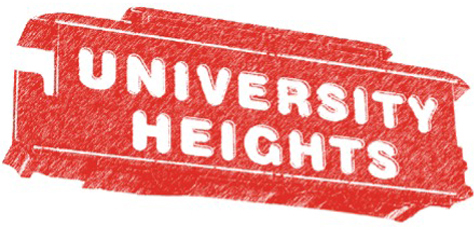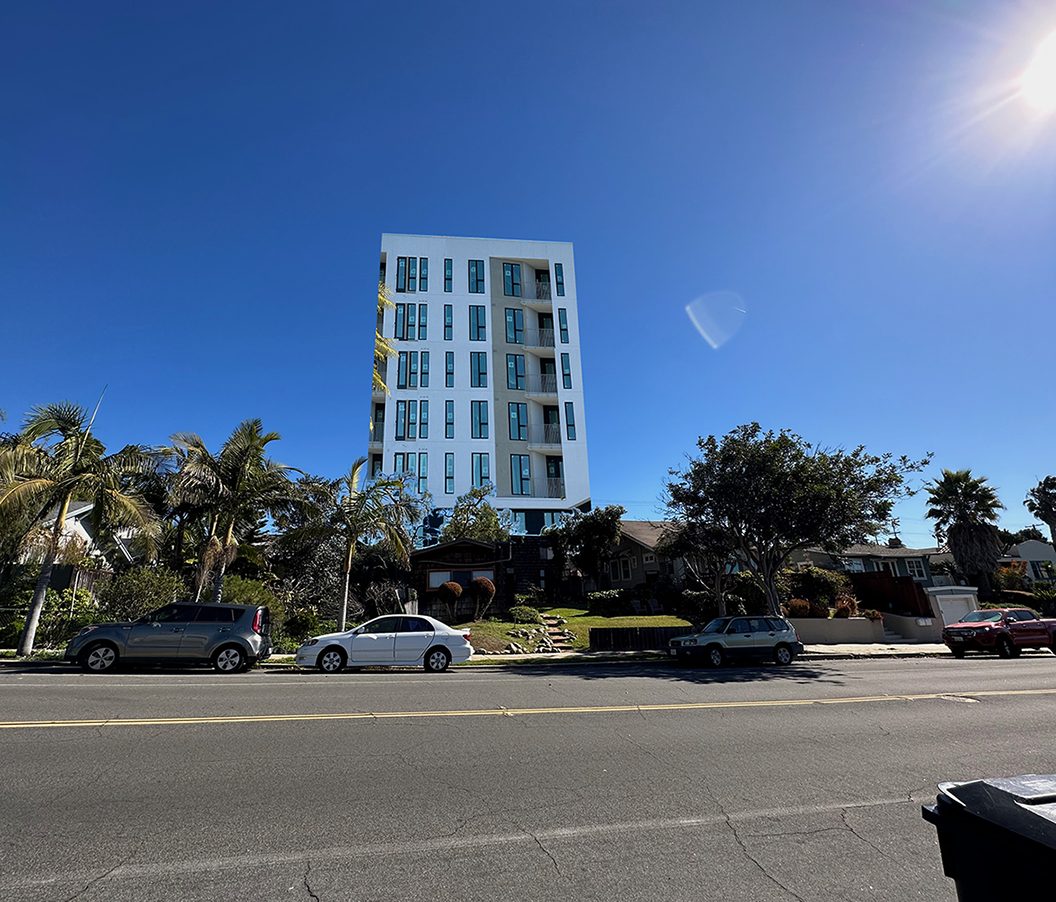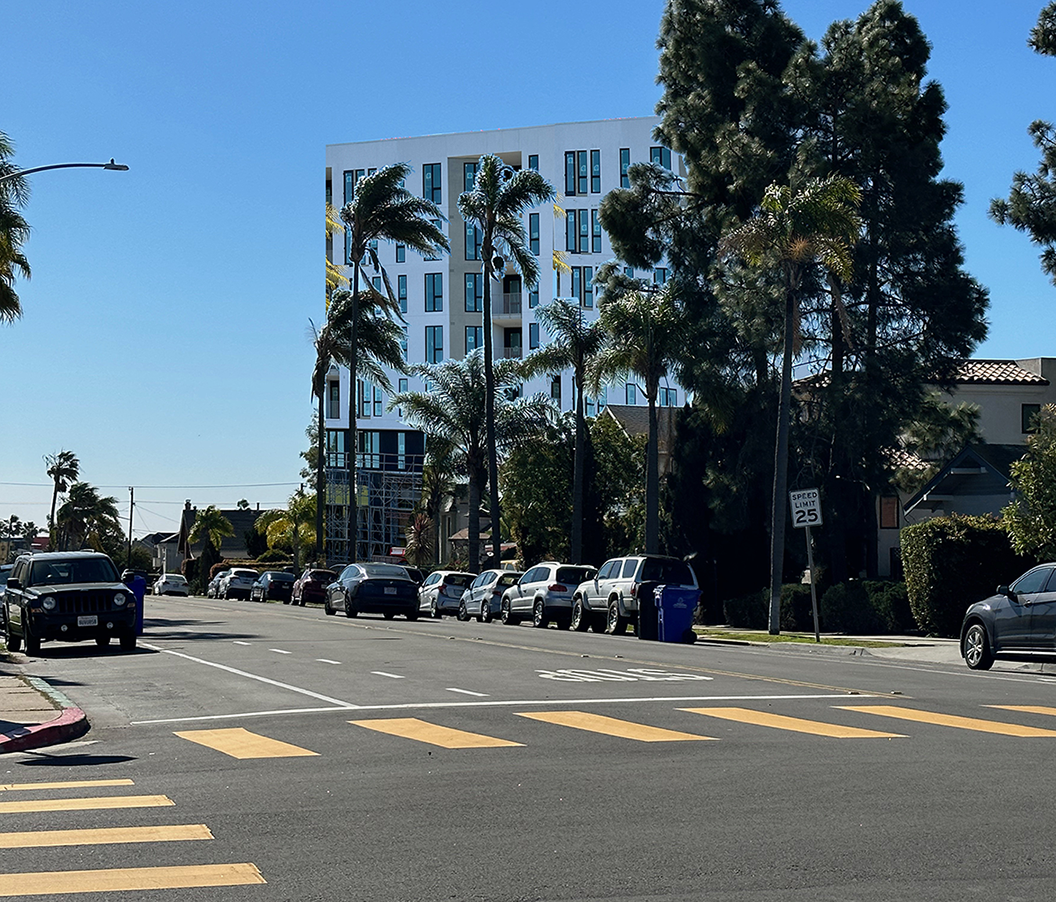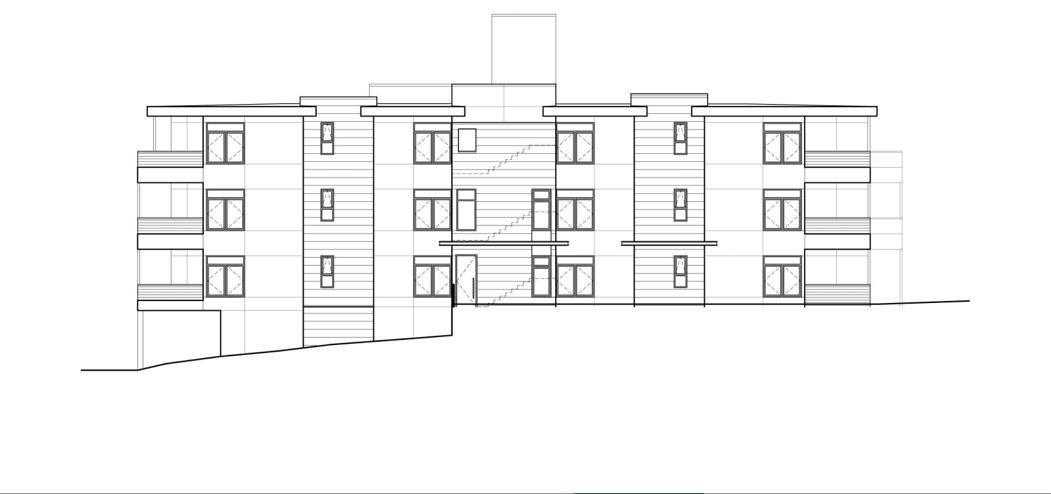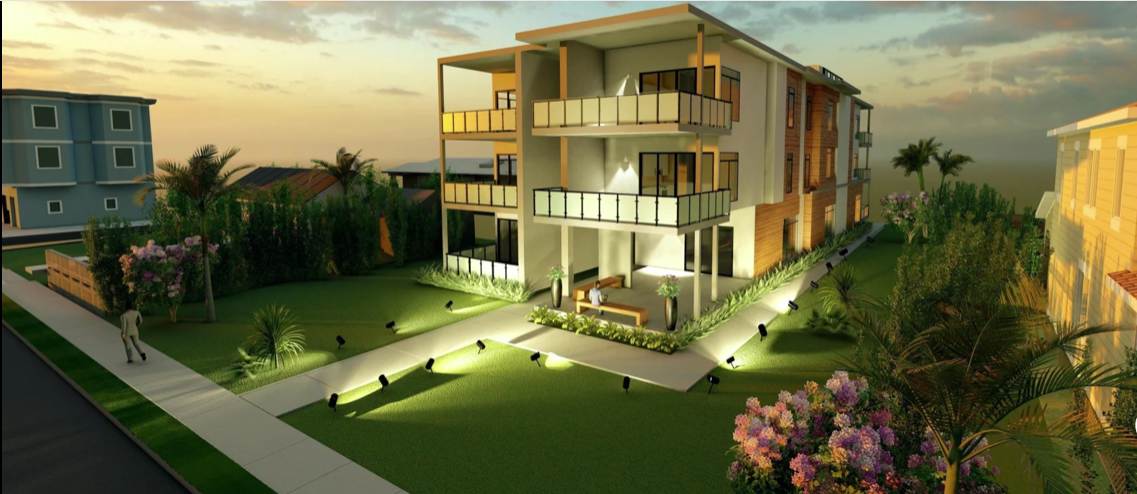as seen in...

There is no question that San Diego is facing an affordable housing crisis. The Mayor has enacted dramatic changes to how housing is developed with “Complete Communities” and “Housing Action Package 1.0 and 2.0” to try to streamline development, remove obstacles, reduce public input, and extend zoning regulation variances. One result of those efforts is a project currently underway in the middle of the 4300 block of Cleveland Avenue, which could drastically change that part of UH.
This project will replace an older single-family home with a new 8-story residential building with 49 units, according to the plans on file (PRJ-1074917). The new building will be one story taller than the Winslow project a few blocks away, and three more stories than the nearby Washington Crossing. To get a visual idea of what this could look like, I took an image of the Winslow, added a story, and cropped/sized to scale. This is not based on any architectural drawings, as none have been - nor need to be - shared under new City regulations:
Images above: (1) 4350 Cleveland before it was torn down; (2) Same view with what an 8-story, 49 unit building could look like; (3) view from neighboring Maryland St. looking East; (4) View looking South on Cleveland from Meads; (5) C-12 project sketch, proposed in 2020 and withdrawn in 2022; (6) C-12 was a 12-unit, 3-story project with no included parking
UH has seen many ADUs or “granny flats” constructed since first approved in 2016. Under the City’s new development changes, larger multi-family projects are fast-tracked on what were single-family lots. UH is a prime area for these projects with our larger lot sizes, older home stock, and proximity to transit. In 2020, under previous zoning regulations, a 12-unit, 3-story redevelopment project was proposed for this same property.
That project was withdrawn in April 2022, and Fran Daly, a UH homeowner on neighboring Maryland Street, became concerned about what was happening on that site. She spoke with neighbors next to the property and discovered the new plans. “When we heard it was going to be 8 stories tall – I couldn’t believe it,” Daly said. “This is like having the UH Water Tower in the middle of the block!” [eds. note: the water tower is 127 feet tall, and this project is estimated to be 75 feet tall- 10 feet taller than Winslow and 30 feet taller than Washington Crossing].
Daly reached out to the City and confirmed that the new project was indeed happening as described. She was also informed by the Development Services Department, “as the proposed project is a Process One Construction Permit, as long as the project complies with the Municipal Code, it can be approved by City Staff without a public hearing and cannot be appealed as noted in San Diego Municipal Code 112.0502.”
Why the Crisis?
According to California Housing Partnership data, the City of San Diego is severely below the Regional Housing Needs Allocation goals, with 4,000 housing units more than the “above moderate-income” goal, and a shortage of nearly 50,000 units for moderate, low- and very low- income.
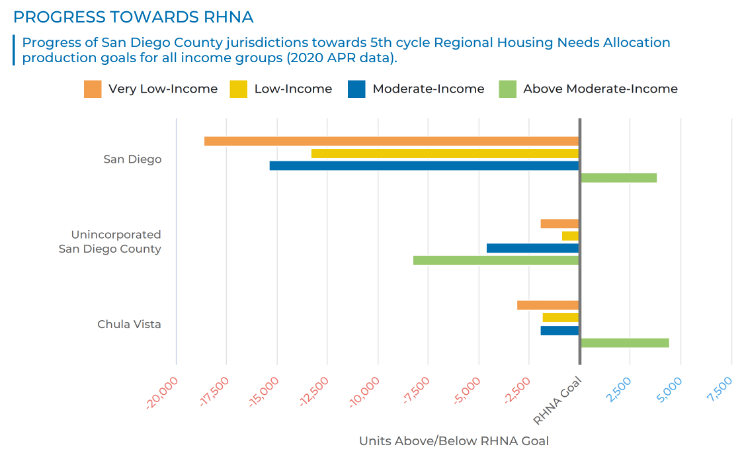
Most of the projects currently under development in UH are market-rate, mostly small (1-bedroom, studio, and “micro”) units. While these additional units may increase the overall stock of rental housing, there is no evidence that increasing the number of higher-end premium housing units will increase the amount of affordable housing. Only small numbers of units are being designated for “affordable housing” and in some cases, those affordable units are being traded-off to other buildings.
What can UH do?
The short answer is not much. The City has gone farther than new state laws (SB9 and SB10) to expand what can be built in all areas of the City. Decisions that once were publicly discussed at planning groups like Uptown Planners and North Park Planning Committee are now being made at the City’s discretion without any need to share with or get input from residents. There is no easy fix to the need to address affordable housing, and it will require some change in neighborhoods - density in the right locations, with supportive elements where needed, and measuring the effectiveness.
With thousands of new residents coming to UH over the next few years filling over 1,100 units of housing under development, questions about infrastructure need to be raised. How will thousands of new residents get around? Will they be using bikes and public transportation, as many of the developments do not have adequate parking? How will they get to major employment centers with commute times of over 1.5 hours on busses? What impact will increased traffic have on our already struggling roads feeding 163, I-805, and I-15? And what about our already undersized library and parks?
The Mayor, as CEO of the City, has immense power to enact dramatic changes, and with the strong-Mayor system enacted in 2010, the City Council (including our representative) has typically voted for those changes over the loud protests from constituents, including those that spoke at the recent Land Use committee vote. Our community will need to organize, continue speaking up, and hold elected officials to account for decisions that will impact our neighborhood. 4350 Cleveland will not be the last project of this magnitude that will dramatically impact and alter UH.
Ultimately, however, it is property owners who will determine what our community looks like in the future. Property owners can still choose to sell their property to deserving buyers rather than to developers. Owners can also choose to remodel or expand their homes in a manner that is consistent with our community character (see article in this issue by Kristin Harms). While there may not be much we can do to change City development policy at this point, we do have control over our own property and how it contributes or detracts from the broader community.
-Marc Johnson
